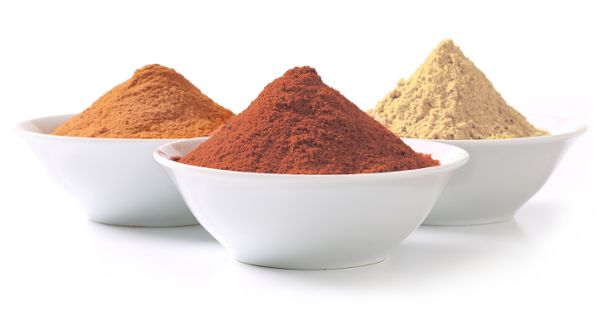Typically, powder-drying operations involve the application of heat to a solution, wet powder or slurry. Bulking and packaging of the dried powder usually follows. Common dryer types include tray, fluidized bed, and spray, rotary and vacuum dryers. In any type of dryer, the dry powder can build up as a bulk or layer in various locations within the dryer, or in downstream process equipment or ultimately in hoppers, silos, big bags or smaller packages.
Safe Powder Drying
Evaluation of self-heating hazards of powders
The first step in ensuring safety from fires and explosions in drying operations is having a proper understanding of the thermal instability properties of the powder (including its potential for gas generation), dust cloud explosibility and gas flammability.
Powder self-heating hazards can occur when the temperature of the powder in bulk or layer is raised to a level at which the heat generation rate by the exothermic reaction exceeds the rate of heat lost to the surroundings. Temperature increase follows, which frequently results in smoldering and eventually fire. As previously mentioned, several factors can affect the onset temperature for self-heating. Other variables such as air flow through the bulk powder or over the powder surface also influence the transition from smoldering to glowing and flaming as well as the onset temperature for self-heating.
Isothermal Basket Test:
Measurement of exothermic activity involves heating the sample under controlled conditions to determine the point at which its temperature starts to increase independently of the external heat source.
Isothermal basket testing is performed by heating the powder samples in cubical wire baskets of varying sizes (typically three sizes) in an oven to determine the minimum temperature at which each sample size self-heats. This test allows one to observe the effect of scale (that is, powder size/quantity) on the powder’s onset temperature for self-heating more precisely. Each trial involves placing a stainless-steel mesh basket filled with the powder sample in an oven, which is heated and maintained at a preselected temperature until self-heating is detected or for a duration of 24 hours or longer depending on the actual heating or storage cycle under study, whichever occurs first. The trials are repeated at various temperatures and basket sizes until the sample’s minimum onset temperature for self-heating is determined for each basket size.
Bulk Powder Test:
A bulk powder test is used to evaluate self-heating properties of powder in quantities not exceeding 1 ton in situations when it is heated in bulk form. Examples include powder accumulations in bulk in some dryers, hoppers, silos or packaging.
A glass cylinder with a height of 80 mm and diameter of 50 mm, which is closed at the base by a sintered glass, is filled with the test powder and placed in a uniform temperature oven. The temperature of the oven as well as the powder temperature at four different heights within the glass cylinder is monitored.
Aerated Powder Test:
The aerated powder test simulates conditions during drying (heating) operations of powder in quantities not exceeding 1 ton in which a hot air stream flows through the bulking powder — for example, in fluid bed drying.
The glass test cell used for this test is identical to the bulk powder test, however, in the aerated powder test, an air stream, which is at the same temperature as the oven temperature, flows at a rate of 0.6 1/min through the sample during the entire test cycle. As in the bulk powder test, the sample temperature is measured at several locations in the cell to detect any exothermic activity and the activity’s onset temperature.
Powder Layer Test:
The powder layer test (also called air-over-layer test) simulates the conditions in which hot air passes above a layer or deposit of powder in a dryer. Examples include tray dryers and powder deposits on the internal surfaces of all dryer types.
Precautions for avoiding smoldering, fires and explosions include:
- Keeping the powder temperature at a safe margin below the temperature for the onset for self-heating obtained by appropriate test methods.
- Facility and equipment design should avoid ledges, corners, dead zone, etc., where powder could inadvertently build up inside process equipment.
- Avoid accumulation of hazardous levels of powder deposits on the inside surfaces of process equipment.
The prevention of thermal runaway in drying operations can be achieved through careful application of the tests described in this article; they form an important route to achieving safe powder drying. Of course, fire and explosion protection measures and measures to avoid other sources of ignition must also be examined through good process safety practices to achieve safe plant operation.
We at KERONE have a team of experts to help you with your need for Powder Drying in various products range from our wide experience. For any query write us at [email protected] or visit www.kerone.com

